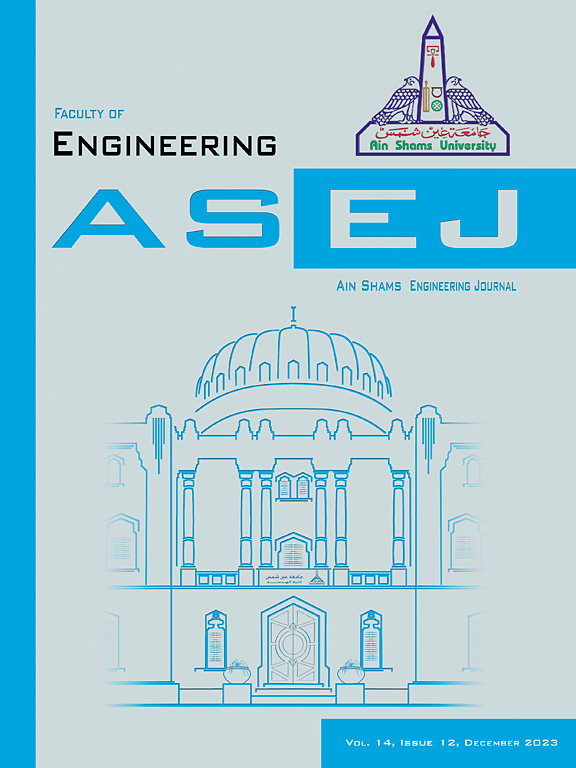Assessment of the coherence of groundwater levels in coastal aquifers with climate change and anthropogenic activity
IF 6
2区 工程技术
Q1 ENGINEERING, MULTIDISCIPLINARY
引用次数: 0
Abstract
This study aimed to assess the coherence between groundwater levels and various factors during two distinct periods, 2002–2020 and 2025–2050, in Miandoab aquifer in northwestern of the Iran. Partial wavelet coherence and multi-wavelet coherence analyses were employed to assess the coherence between individual parameters and their simultaneous coherence. The factors considered in the study were derived from remote sensing data, including Gravity Recovery and Climate Experiment data and Landsat data, which were utilized to examine water storage anomalies and anthropogenic activity, respectively. Additionally, General Circulation Models were employed to predict groundwater levels under future climate change scenarios via a feedforward neural network. To streamline the modeling process and categorize piezometers, with each group reflecting different patterns, clustering techniques were applied to group multiple piezometers. There were four final clusters, and representative piezometers from each cluster were chosen as targets for modeling and future predictions. Finally, the differences in coherence between past and future periods were compared and analyzed. The results revealed decreasing trends in groundwater level, precipitation and soil moisture index in 2025–2050; however, there were increasing trends in normalized difference vegetation index and temperature. In addition, wavelet analysis indicated that during the period 2025–2050, the delay in interaction between groundwater level and various factors decreased to 0–4 months, whereas longer delays were observed for the period 2002–2020. The analysis of multi- wavelet coherence showed that the combination of climate change and anthropogenic activity may have more significant coherence (0.9–1) with groundwater level than the combination of gravity recovery and climate experiment data and soil moisture index. The results highlight the greater significance of gravity recovery and climate experiment data in terms of coherence with groundwater levels compared to other factors.
评估沿海含水层地下水位与气候变化和人为活动的一致性
本研究旨在评估伊朗西北部 Miandoab 含水层在 2002-2020 年和 2025-2050 年两个不同时期的地下水位与各种因素之间的一致性。采用了部分小波相干性和多小波相干性分析来评估单个参数之间的相干性以及它们之间的同步相干性。研究中考虑的因素来自遥感数据,包括重力恢复和气候实验数据以及大地遥感卫星数据,这些数据分别用于研究蓄水异常和人为活动。此外,还采用了大气环流模型,通过前馈神经网络预测未来气候变化情况下的地下水位。为了简化建模过程并对压水计进行分类(每组反映不同的模式),采用了聚类技术对多个压水计进行分组。最终确定了四个群组,并从每个群组中选择具有代表性的压水计作为建模和未来预测的目标。最后,对过去和未来时期的一致性差异进行了比较和分析。结果显示,2025-2050 年地下水位、降水量和土壤水分指数呈下降趋势;但归一化差异植被指数和温度呈上升趋势。此外,小波分析表明,在 2025-2050 年期间,地下水位与各种因素之间的相互作用延迟时间缩短至 0-4 个月,而在 2002-2020 年期间,延迟时间较长。多小波相干性分析表明,气候变化和人为活动的组合与地下水位的相干性(0.9-1)可能比重力恢复与气候实验数据和土壤水分指数的组合更为显著。结果表明,与其他因素相比,重力恢复和气候实验数据与地下水位的一致性更为重要。
本文章由计算机程序翻译,如有差异,请以英文原文为准。
求助全文
约1分钟内获得全文
求助全文
来源期刊

Ain Shams Engineering Journal
Engineering-General Engineering
CiteScore
10.80
自引率
13.30%
发文量
441
审稿时长
49 weeks
期刊介绍:
in Shams Engineering Journal is an international journal devoted to publication of peer reviewed original high-quality research papers and review papers in both traditional topics and those of emerging science and technology. Areas of both theoretical and fundamental interest as well as those concerning industrial applications, emerging instrumental techniques and those which have some practical application to an aspect of human endeavor, such as the preservation of the environment, health, waste disposal are welcome. The overall focus is on original and rigorous scientific research results which have generic significance.
Ain Shams Engineering Journal focuses upon aspects of mechanical engineering, electrical engineering, civil engineering, chemical engineering, petroleum engineering, environmental engineering, architectural and urban planning engineering. Papers in which knowledge from other disciplines is integrated with engineering are especially welcome like nanotechnology, material sciences, and computational methods as well as applied basic sciences: engineering mathematics, physics and chemistry.
 求助内容:
求助内容: 应助结果提醒方式:
应助结果提醒方式:


